-
.
LANCIA DELTA S4 STRADALE
1:18 AUTOART (74772)
Year/Anno : 1985
Color : Grigio argento / Silver
My rating/Mio Voto : 90/100
Value for Money/Rapporto qualità prezzo : 74/100
Original price/Prezzo : €uro 240/290 (2016)
Materiale: Die-cast in metallo
Limited: Sì/Yes
Clicca il banner in alto per tornare alla Homepage e visionare altri modelli.
Click on the banner on the top of this page to return at the Homepage and see all the other models of my collection.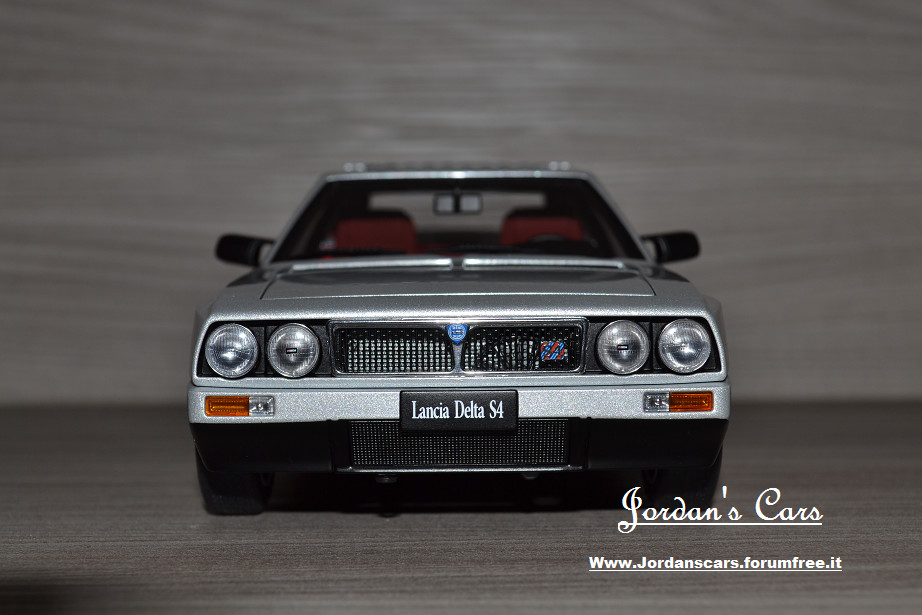
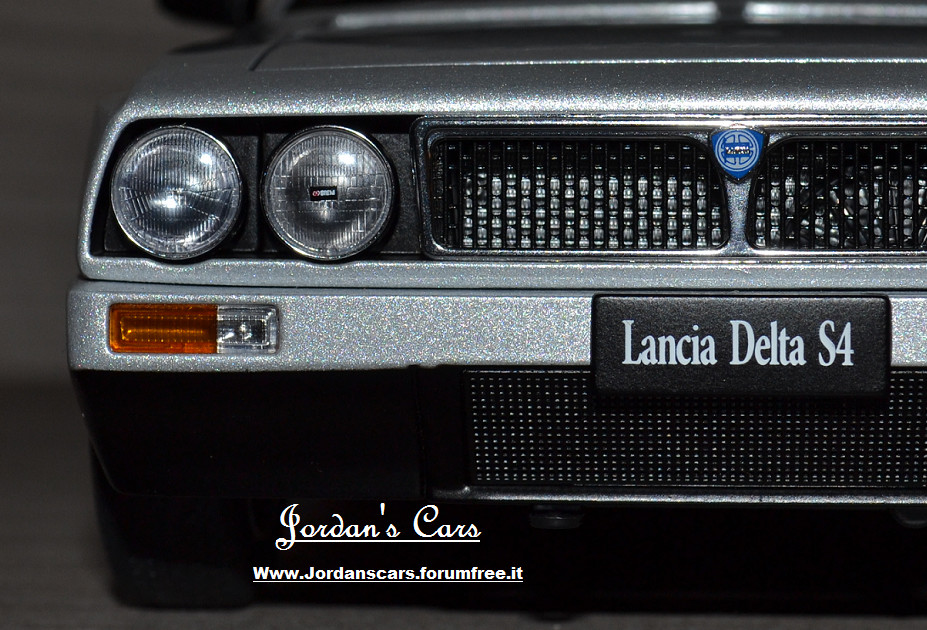
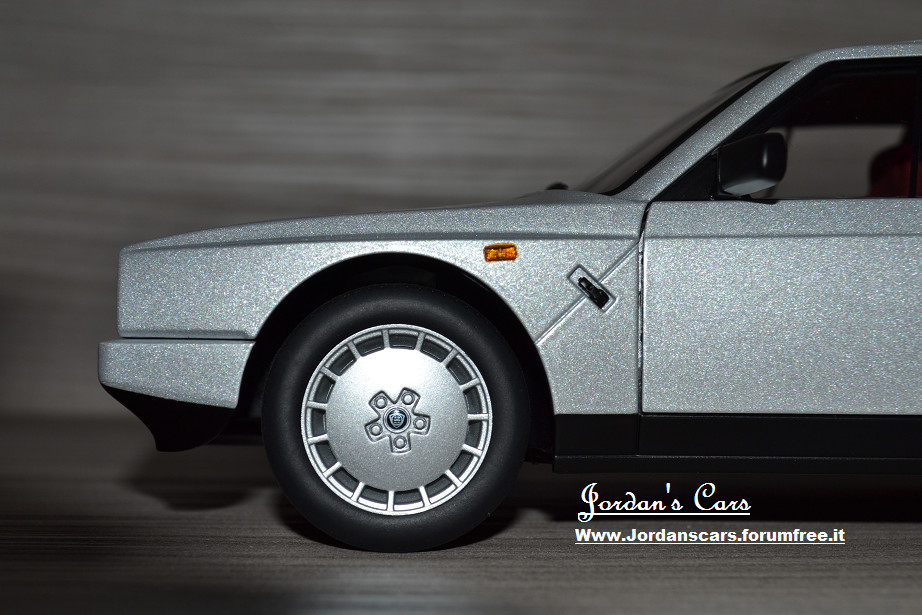
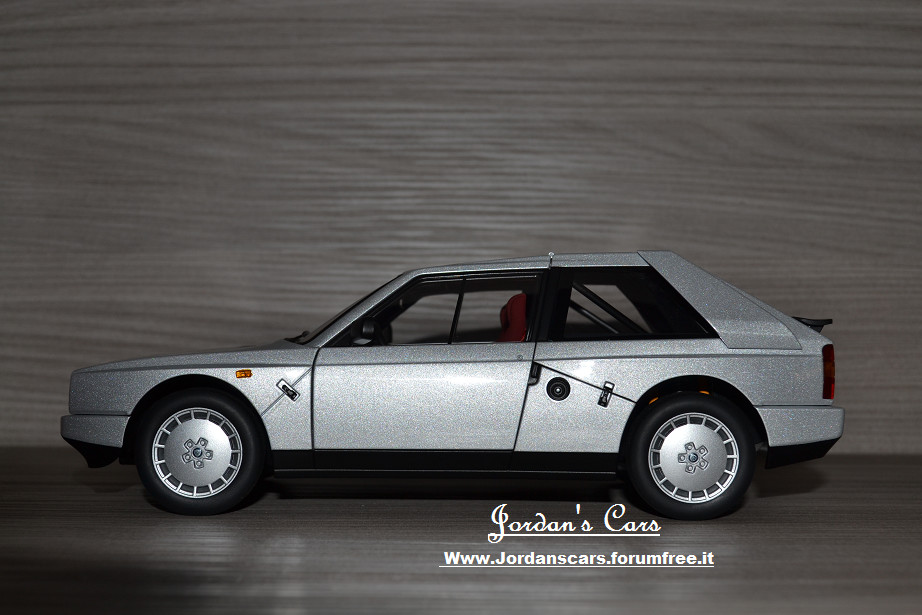
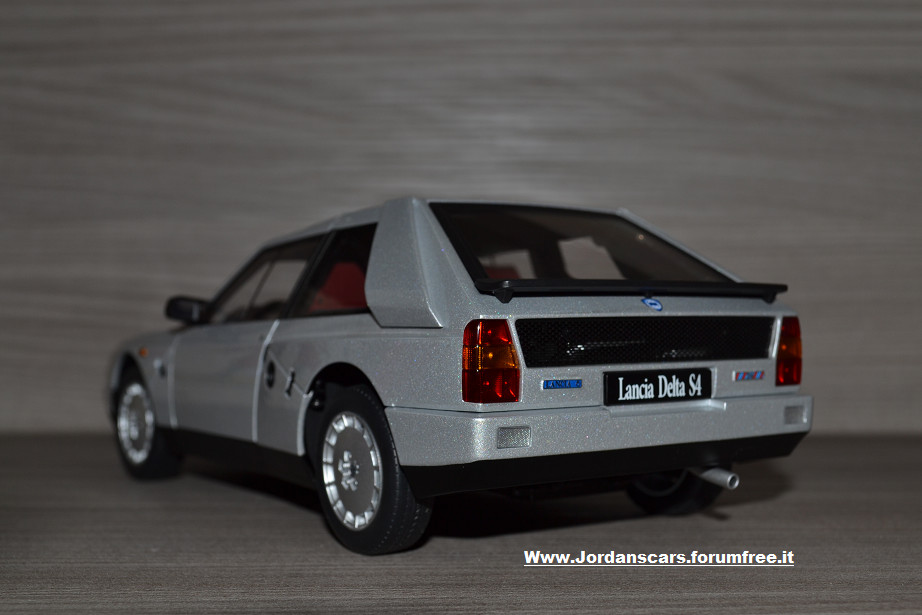
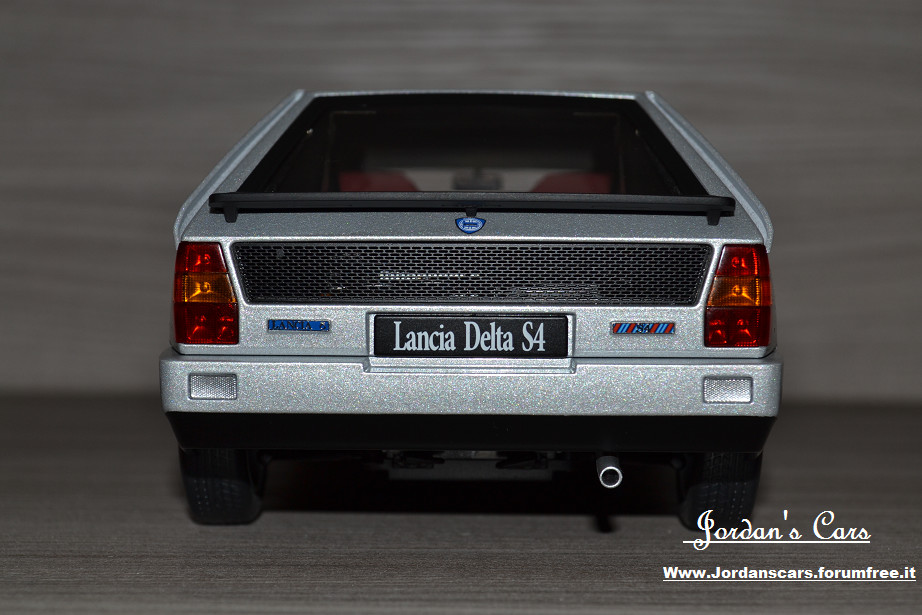
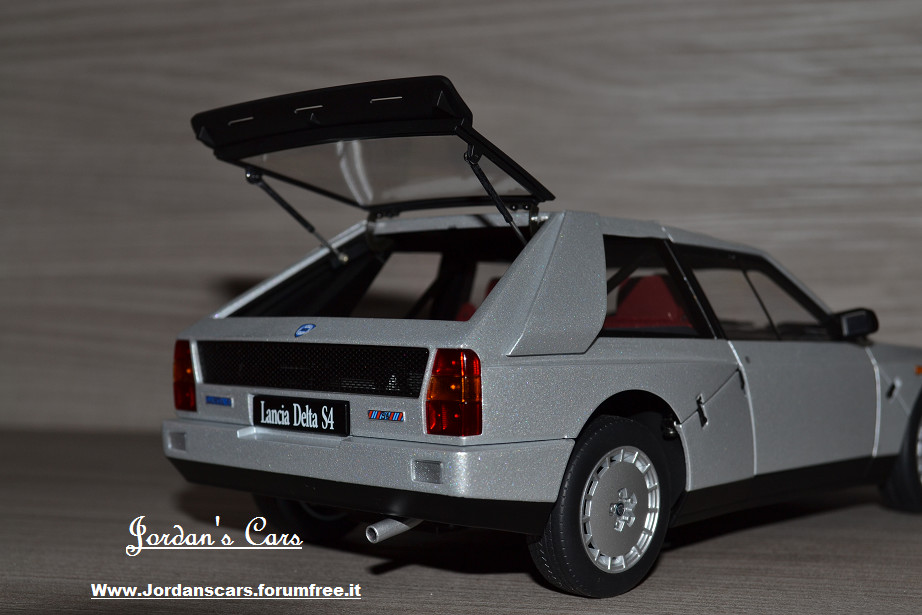
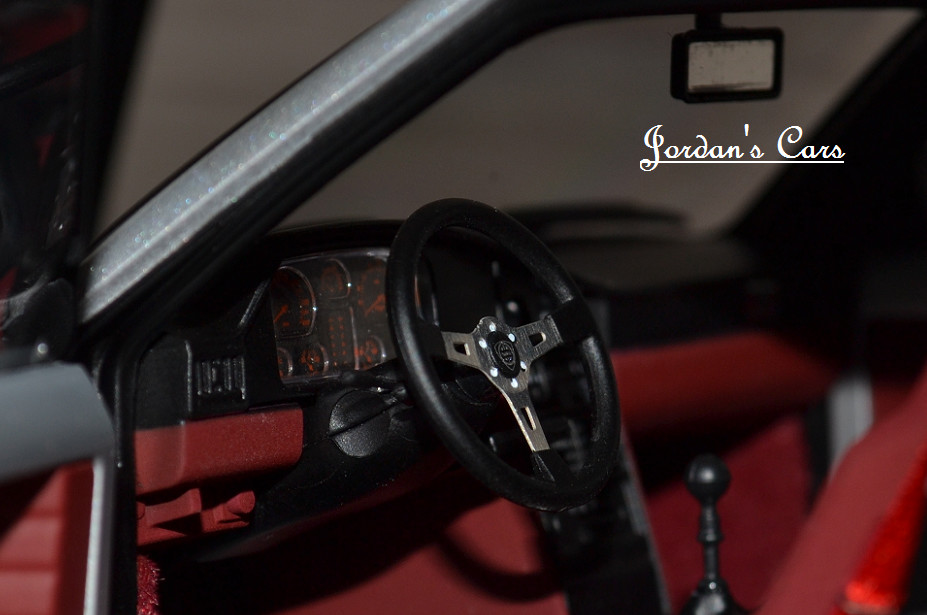
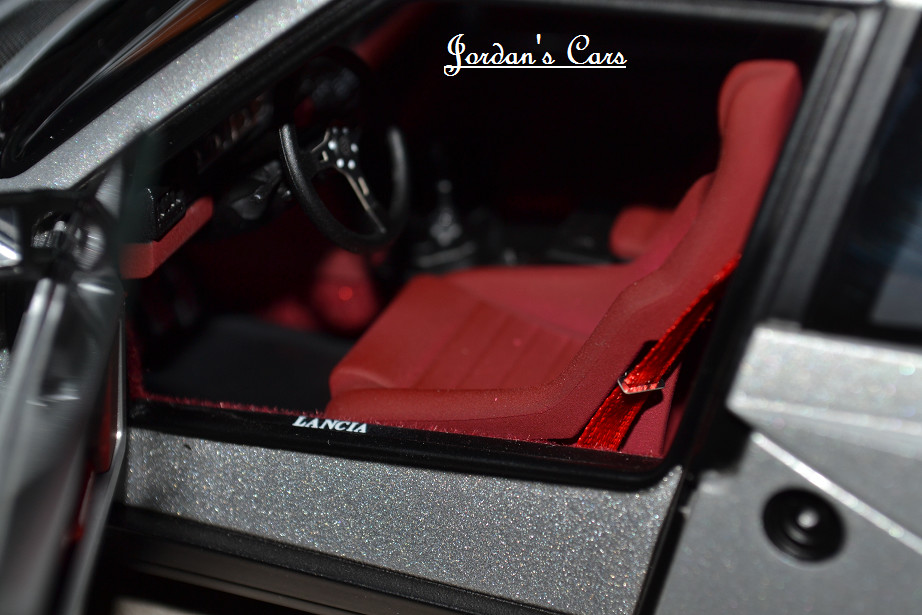
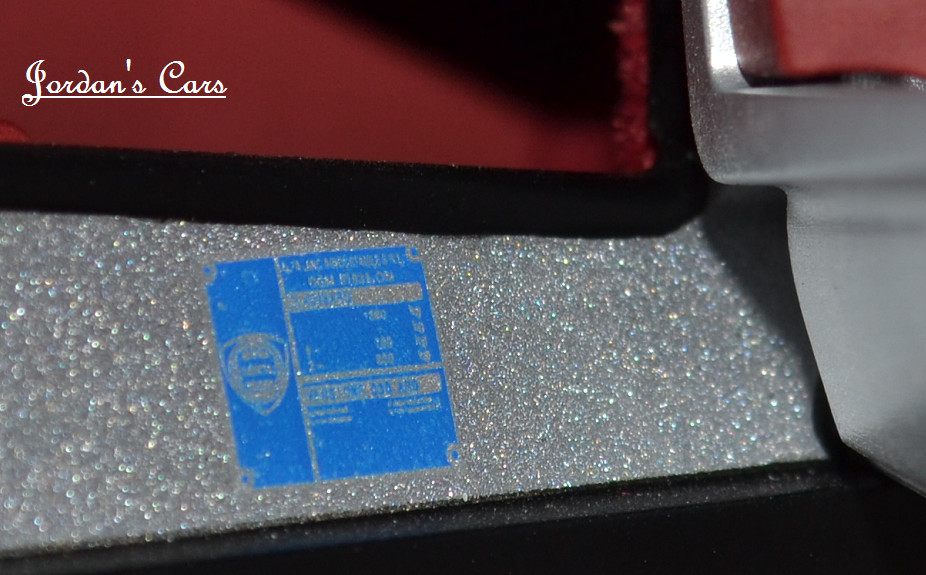
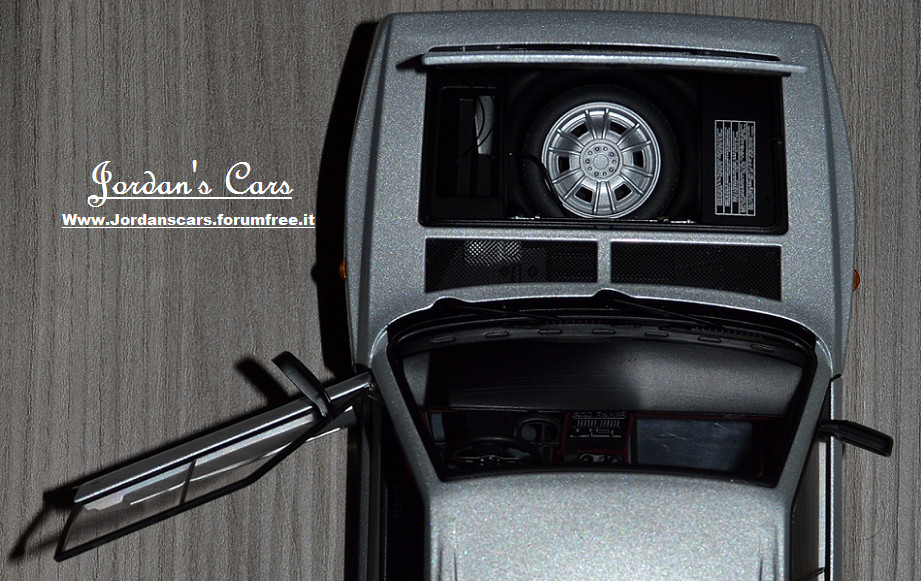
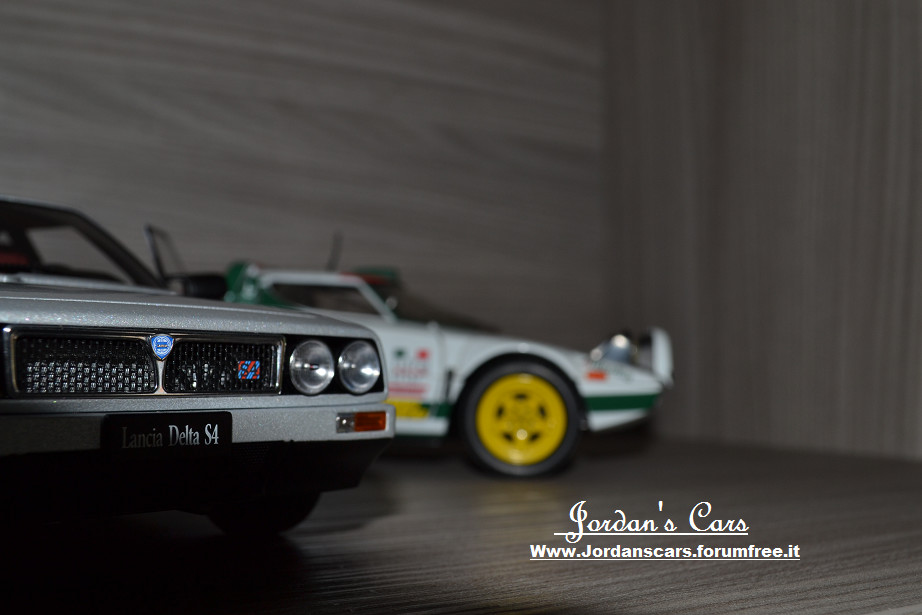
Breve commento al modello:
Una riproduzione sicuramente di alta qualità, ma qui Autoart ha alzato decisamente il prezzo,per un modello che nella prima edizione con livrea rally costava circa il 30% in meno!! Stupendi alcuni dettagli, ottime le decals e gli interni; per accedere al vano motore, che non ho ancora aperto, bisogna svitare un paio di viti, eventualmente se desiderate vederlo, nel forum trovate la fotogallery della S4 Totip che ha un vano motore simile.
Storia dell'auto(from wiki):
La Lancia Delta S4 è una autovettura sportiva costruita dalla casa automobilistica italiana Lancia nello stabilimento di Borgo san Paolo a Torino, per una quantitativo di 200 esemplari stradali, al fine di omologarne la variante da competizione secondo le norme FIA Gruppo B, da utilizzare nel Campionato del mondo rally, in cui ha gareggiato dal 1985 al 1986.
Nel 1985 per rendersi nuovamente competitivi di fronte alle altre case automobilistiche nel mondiale rally, bisognava battere la Peugeot 205 Turbo 16 sul suo stesso campo, quello aperto dall'Audi con la quattro: la trazione integrale era una necessità inderogabile e la Lancia 037, utilizzata fino ad allora nelle gare, non era ormai più competitiva. Perciò lo staff Lancia-Abarth condotto dall'ingegner Lombardi diede vita alla Delta S4 (S="sovralimentata"; 4=quattro ruote motrici), con l'obiettivo di vincere nelle competizioni rally internazionali del Gruppo B. Quest'auto fu l'unica Delta mai prodotta per le competizioni a non avere in pratica nulla da spartire col modello di serie: fu necessario produrre e mettere in vendita al pubblico 200 esemplari stradali, obbligatori da regolamento per l'omologazione della vettura da gara.
Il motore di questa vettura era un 4 cilindri in linea con una cilindrata di 1759 cm³. Il basamento del motore (posto centralmente) è in lega di magnesio, e la testata, in lega leggera, inoltre le canne dei cilindri erano rivestite superficialmente con un raffinato e tecnologico trattamento a base di materiale ceramico (Cermetal). Le valvole erano 4 per cilindro in Nimonic (una lega Nichel-base normalmente impiegata in applicazioni ad alta temperatura ed alto stress meccanico). Vi era un sistema di doppia sovralimentazione: un turbocompressore KKK k27 più compressore volumetrico (volumex, brevettato dalla Abarth tipo R18): il vantaggio del volumex era di "spingere" già a 1.500 giri/min. La potenza pura veniva invece dal turbocompressore KKK a gas di scarico. L'unione dei due sistemi permise elasticità e potenza. I due sistemi di sovralimentazione vennero accoppiati escludendo il Volumex agli alti regimi di rotazione dove funzionava solo il turbocompressore. La Delta S4 in versione stradale aveva 250 CV, la versione da gara al debutto nel 1985 ne aveva 480, mentre l'ultima evoluzione schierata nel campionato mondiale 1986 poteva sviluppare per brevi tratti anche 650 CV (476 kW) con una pressione di sovralimentazione di 2,5 bar tramite un overboost regolabile dall'abitacolo.
Il telaio aveva una struttura reticolare di tubi saldati al Ni-Cr, per poter essere facilmente riparabile e permettere all'assistenza di raggiungere con facilità tutti gli organi meccanici, mantenendo una sufficiente leggerezza. Le sospensioni erano a parallelogramma deformabile, progettate per sopportare una accelerazione otto volte superiore a quella di gravità. Le anteriori avevano molla e ammortizzatore coassiale, mentre le posteriori (doppie) avevano l'ammortizzatore esterno alla molla, per sopportare il maggior peso (57% del carico, più trasferimento di peso in accelerazione). L'escursione era di 250 mm.
La trasmissione si avvaleva di un cambio ad innesti frontali, con albero primario cavo; il moto arrivava alla parte posteriore dell'albero attraverso una sottile barra concentrica, che si torce per rapidi aumenti di coppia sollecitando meno il cambio. Si avvaleva inoltre di un ripartitore centrale di coppia costituito da un rotismo epicicloidale sul terzo asse, munito di giunto Ferguson autobloccante. Infatti il semplice differenziale impone parità di coppia; se uno dei due assi si trova in zona a bassa aderenza si verifica uno slittamento, e il differenziale riduce moltissimo la coppia trasmessa anche all'altro asse, limitando la trazione. Per impedire ciò occorre inibire delle forti differenze nella velocità di rotazione dei due assi. Il giunto Ferguson è costituito da due armature, una interna ed una esterna, con due serie di dischi forati ed affacciati tra loro; l'intero giunto è poi sigillato, e riempito parzialmente di un liquido siliconico viscoso. Se c'è una velocità di rotazione relativa tra le due armature, il liquido è costretto a laminare fra disco e disco, e attraverso i fori nei dischi, esercitando una coppia frenante e riscaldandosi. Oltre una certa temperatura la coppia frenante si impenna, ottenendo la saldatura di presa diretta del giunto: grazie a questo effetto, in caso di rottura di un semiasse, in breve tempo il Ferguson si blocca e il veicolo può proseguire.
I primi test tecnici della Delta S4 furono seguiti da Giorgio Pianta, allora capo collaudatore dell'Abarth. A partire dall'estate 1985, Cesare Fiorio, responsabile Squadra Corse Lancia, affidò al pilota italiano Miki Biasion lo sviluppo della vettura. La distribuzione della potenza sulle ruote nell'ambito della trazione integrale era stabilita su due standard fissi: a seconda degli impieghi si poteva scegliere l'opzione del 20% all'avantreno e 80% al retrotreno, oppure quella del 35% e 65%. Henri Toivonen, pilota ufficiale della scuderia Lancia-Martini Racing, in un'intervista dichiarava: "...non avevo il coraggio di tener giù per farla scivolare.....poi ho capito che dovevo guidarla come se fosse sui binari...".
The Lancia Delta S4 is a Group B rally car from the Italian car company Lancia. The Delta S4 competed in the World Rally Championship in 1985 and 1986, until Group B cars were banned from competition by the FIA. The car replaced and was an evolution of the Lancia 037. The S4 took full advantage of the Group B regulations, and featured a midship-mounted engine and all-wheel drive for superior traction on loose surfaces.
The car's 1,759.3 cc four-cylinder engine combined supercharging and turbocharging to reduce turbo lag at low engine speeds.[1] Officially, the car produced 480 horsepower (350 kW), but some sources claim that the Delta S4 produced about 560 horsepower (417 kW). In 1985, Lancia engineers tested an S4 engine under extreme conditions, reaching 5 bars boost, developing around 1000 horsepower. An engine capacity multiple of 1.4 was applied to forced induction engines by the FIA and the choice of 1,759 cc put the S4 in the under 2,500 cc class, which allowed for a minimum weight of 890 kg (1,962 lb). The combined super/turbocharger system (often referred to as twincharging) was a development of the 037 engine that produced 350 hp (261 kW) with a supercharger only.
Like Peugeot's earlier 205 T16, the mid-engine Lancia Delta S4 was a Delta in name and body styling only (for marketing purposes), and shared virtually nothing in terms of construction with the production front-engine Delta. The chassis was a tubular space frame construction much like the 037. It featured long travel double wishbone suspension front and rear, with a single large coil over at the front and separate spring and twin shock absorber at the rear. The bodywork was made of a carbon fibre composite with front and rear bodywork fully detachable for fast replacement due to accident damage, allowing ease of access during on-event servicing. The bodywork featured several aerodynamic aids including bonnet opening behind the front-mounted water radiator with Gurney flap, front splitter and winglets moulded into the front bumper panel, flexible front skirt, and rear deck lid wing that featured both a full aerofoil wind section twinned with a deflection spoiler. The door construction style was brought from the 037 with a hollow shell all-Kevlar construction that had no inner door skin, no door handle or window winder. The door was opened with a small loop and the windows were fixed perspex with small sliding panels to allow some ventilation and passing of time cards and suchlike.
The all-wheel drive system, developed in cooperation with English Hewland, featured a centre differential which allowed for between 60 to 75% of the torque to go to the rear wheels.
The Group S Lancia ECV was to replace the Delta S4 in the 1987 season but Group S was scrapped along with Group B and Lancia used the production-derived Delta in 1987.
Between October 1985 and 1986 Lancia built 200 examples of a road-going version of the Delta S4, officially named Lancia Delta S4 but widely known as "Stradale", for the purpose of homologation in Group B. In Italy the car was priced at about 100 million Lire: five times the price of the most expensive Delta of the time, the HF Turbo.
The Stradale's chassis was a space frame, similarly to the racing cars, built out of CrMo steel tubes and aluminium alloy for the crash structures; it was covered by epoxy and fiberglass body panels. Like the rally car these cars mounted in a midships position a 1.8-litre engine, equipped with Weber-Marelli IAW integrated electronic ignition and fuel injection, a supercharger, a turbocharger and two intercoolers. In road tune the 1.8 produced 250 PS (184 kW; 247 hp) at 6750 rpm and 291 N·m (215 lb·ft) at 4500 rpm. The "Stradale" kept a three differential four-wheel-drive system; the centre differential sent 30% of the engine torque to the front open differential, and 70% to the rear limited slip one.
Lancia claimed the car could reach top speed of 225 km/h (140 mph) and accelerate from standstill to 100 km/h (62 mph) in six seconds. In contrast to its bare bones racing sisters, the S4 Stradale featured an Alcantara-upholstered interior, sound deadening, a suede steering wheel, and was equipped with power steering, trip computer and air conditioning.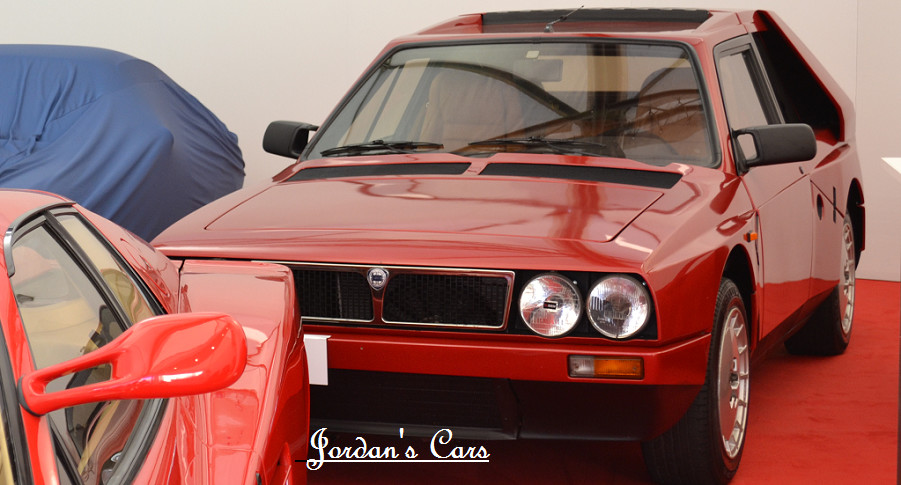
Modelli correlati/Related models:
LANCIA DELTA HF EVOLUZIONE II ------> https://jordanscars.forumfree.it/?t=69093952
LANCIA 037 STRADALE -----> https://jordanscars.forumfree.it/?t=70295878
Edited by xJORDANx - 12/7/2016, 01:45. -
.
Dettaglio notevole... così come il prezzo!  .
. -
alessandro21.
User deleted
Questo auto-modello è da orgasmo!!!!!!!! sempre apprezzato fin da quando l'ho visto le prime volte, specialmente nella più rara colorazione argento con interni rossi. Voto 11  .
. -
.
Esternamente preferisco colori più vivaci di questo grigio su un'auto del genere,ma il contrasto con gli interni rossi meritava! . -
cndgcndg.
User deleted
Hi,
I need your help. Anyone know how many Lancia Delta S4 Straddle was sold by Lancia and the number of the chassis?. -
.
They sold 200 Lancia Delta S4 Stradale.
From chassis 001 to chassis 200.
From chassis 201 are race versions:
http://lanciaworkshistory.com/Delta-S4/.
LANCIA DELTA S4 STRADALEAutoart 1:18 |






